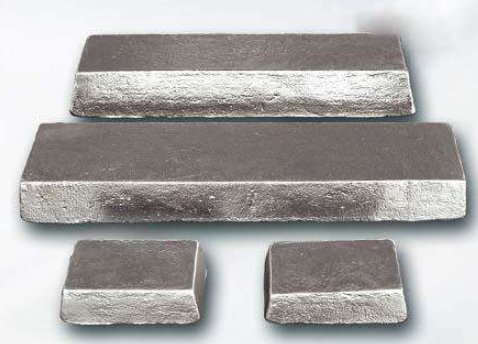Selenium
Selenium is a chemical element, its chemical symbol
is Se, and it is located in the VI A group of the fourth period in the
periodic table of chemical elements. It is a non-metal. It can be used
as photosensitive material, electrolytic manganese industry catalyst,
essential nutrient elements for animals and beneficial nutrient elements
for plants, etc. Selenium exists in nature in two ways: inorganic
selenium and plant active selenium. Inorganic selenium generally refers
to sodium selenite and sodium selenate, which are obtained from the
by-products of metal mineral deposits; the latter is a combination of
selenium through biotransformation and amino acids, generally in the
form of selenomethionine.
The main raw material (90%) for industrial extraction of selenium is the
anode slime produced by the electrolytic refining of copper, and the
rest comes from the calcine produced by the refining of lead, cobalt,
and nickel, and the residue from the production of sulfuric acid. Since
selenium in copper electrolysis anode slime is in the form of selenium
compound symbiosis with precious metals, the selenium content is about
5% to 25% (mass fraction). Therefore, the process is generally to
recover the precious metals gold and silver first, and then recover
selenium. A method of recovering selenium from anode slime to produce
gold and silver alloys.
There are three main types of anode slime treatment processes at home
and abroad: One is the full wet process. The main processes are: copper
anode slime-pressure leaching of copper, tellurium-chloride leaching of
selenium, gold-alkaline leaching, lead-ammonia leaching,
silver-gold-silver electrolysis; the second is mainly wet method, fire
method and wet method The combined semi-wet process is adopted by most
domestic manufacturers. The main process is: copper anode slime-sulfuration
roasting, steaming selenium, dilute acid, copper-chloride, gold-sodium
sulfite, silver-gold and silver electrolysis; the third is the fire
method, which is based on the fire method, and combines the wet method
and the fire method. The main process is: copper anode slime-pressure
leaching of copper, tellurium-fire method smelting, blowing-silver
electrolysis-silver anode slime to process gold.
There are two main methods for industrial production of selenium: one is
oxidizing and roasting anode slime and SeO2 distillation. The process is
to capture gaseous SeO2 roasting gas in a scrubber with a solution, and
then precipitate it in an acid medium or lye under the action of SO2.
Selenium; the other is to add soda ash to sinter the anode slime in an
oxidizing atmosphere to convert selenium into sodium selenide or sodium
selenate water-soluble solution. The process is to oxidize selenium and
selenide to easily soluble in water under sintering conditions. Sodium
selenate or sodium selenate, and then purging to separate selenium from
the solution.
.
.


Selenium is a chemical element, its chemical symbol
is Se, and it is located in the VI A group of the fourth period in the
periodic table of chemical elements. It is a non-metal. It can be used
as photosensitive material, electrolytic manganese industry catalyst,
essential nutrient elements for animals and beneficial nutrient elements
for plants, etc. Selenium exists in nature in two ways: inorganic
selenium and plant active selenium. Inorganic selenium generally refers
to sodium selenite and sodium selenate, which are obtained from the
by-products of metal mineral deposits; the latter is a combination of
selenium through biotransformation and amino acids, generally in the
form of selenomethionine.
The main raw material (90%) for industrial extraction of selenium is the
anode slime produced by the electrolytic refining of copper, and the
rest comes from the calcine produced by the refining of lead, cobalt,
and nickel, and the residue from the production of sulfuric acid. Since
selenium in copper electrolysis anode slime is in the form of selenium
compound symbiosis with precious metals, the selenium content is about
5% to 25% (mass fraction). Therefore, the process is generally to
recover the precious metals gold and silver first, and then recover
selenium. A method of recovering selenium from anode slime to produce
gold and silver alloys.
There are three main types of anode slime treatment processes at home
and abroad: One is the full wet process. The main processes are: copper
anode slime-pressure leaching of copper, tellurium-chloride leaching of
selenium, gold-alkaline leaching, lead-ammonia leaching,
silver-gold-silver electrolysis; the second is mainly wet method, fire
method and wet method The combined semi-wet process is adopted by most
domestic manufacturers. The main process is: copper anode slime-sulfuration
roasting, steaming selenium, dilute acid, copper-chloride, gold-sodium
sulfite, silver-gold and silver electrolysis; the third is the fire
method, which is based on the fire method, and combines the wet method
and the fire method. The main process is: copper anode slime-pressure
leaching of copper, tellurium-fire method smelting, blowing-silver
electrolysis-silver anode slime to process gold.
There are two main methods for industrial production of selenium: one is
oxidizing and roasting anode slime and SeO2 distillation. The process is
to capture gaseous SeO2 roasting gas in a scrubber with a solution, and
then precipitate it in an acid medium or lye under the action of SO2.
Selenium; the other is to add soda ash to sinter the anode slime in an
oxidizing atmosphere to convert selenium into sodium selenide or sodium
selenate water-soluble solution. The process is to oxidize selenium and
selenide to easily soluble in water under sintering conditions. Sodium
selenate or sodium selenate, and then purging to separate selenium from
the solution.
.
.

|

|
